DIRECT RESPONSE DESIGN
Your BFF for Better ROI
Design for leads. Design for acquisition. Design for retention. Direct response advertising is all about design that gets down to business, whatever your marketing goal. So if you’re looking for ways to raise your ROI, please read on.
You’ll find out …
Direct Response versus Branding: Can you tell the difference?
Through the years, I’ve given a bunch of talks on direct response design, and I always start with a picture of a poster or billboard, like the one below:

Then I ask: Is this a direct response ad or a branding one? Invariably, some are not sure. What do YOU think?

Direct Response Design
is not pretty image-building.
Direct response design is any type of creative that works to accomplish one thing: Push prospects to take an action — not next week or next month but NOW. You’re probably thinking, ah you mean good old direct mail. Well, it’s much more than that because direct response includes digital ads (landing pages, emails, and the like), as well as print creative.
Direct response advertising is a marketer’s best friend because you can easily track and measure the effectiveness of a digital ad or a direct mail package. So winners and losers are identified quickly, allowing you to do more with your marketing dollars. To get the job done right, marketers don’t call on just any designer or writer. They use specialists — direct response designers and direct response copywriters — to help them reach their lead generation or sales goal right away.
Branding design, on the other hand, is not out to trigger immediate action — it’s simply to get into your head. Nothing nefarious about it: In a sea of competitors, the advertiser of a particular product, service, or activity just wants to be top of mind. Memorable. As the American Marketing Association explains it, you can brand “a name, term, design, symbol, or any other feature that identifies one seller’s goods or service as distinct from those of other sellers.”
Using those definitions to guide you, can you guess which area of design the Bronx Zoo poster represents? Yes, it could only be branding, because its main mission is brand awareness. It distinguishes the Bronx Zoo from other zoos, with the tagline “a different kind of animal.” Clever copy, right? But there’s no sense of urgency. No offer. It doesn’t incentivize you in any way to visit the Bronx Zoo now. You can “spring to life” with a visit to this zoo anytime you want

Now test yourself with a digital ad, which I created:
Direct response or branding?

Yep, this is a direct response ad. Here’s why:
- This ad is directed to a specific audience. The marketer placed it just in digital newsletters where they believed a potential audience might exist. The ad tells who it’s for and offers special pricing, but only if you act by the deadline. All these factors, along with design elements that reflect the product, make for an ad that has a strong chance of reaching its goal: getting people to sign up immediately for the course offered by the Institute for Jewish Spirituality.
- Strategic use of space, color, and design elements is critical for delivery of the sales message. Even though this is a small ad, it does the job: engage and push readers to click on the button before they miss the savings opportunity.
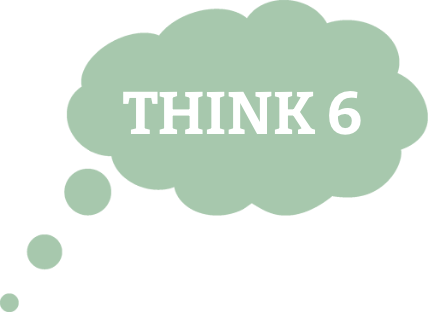
The 6 factors that make direct response work and how I integrate them to get results.
Whenever I start a direct response design job, I consider these factors:
- Target audience
- The “look” – promotional or straightforward?
- Design and copy – do they act as a team?
- Personalization
- Call-to-action (CTA)
- Offer (most important!)
I then continue my design process by asking a variety of pointed questions:
1. Who is your target audience?

Let’s go back to the Bronx Zoo branding poster. It can be placed just about anywhere. At a bus stop … on a highway … at a sports event … in a coffee shop … you name it. Who sees the poster? A whole mix of people because it’s not targeting anyone in particular. Just the general public. A direct response ad has a specific demographic in mind. “Who is your target audience?” is one of the first questions I ask because it helps me know how to position the correct look of the creative. For example, if I am creating a flyer that targets retirees who are also Mets fans, I know I should probably use orange and blue, and large fonts. The more you know about the group you want to persuade, the easier it is to frame the content and design to things they can relate to.
2. Should the look be business-like or more promotional?
There’s a difference – and knowing that is what separates direct response design pros from everyone else, especially in direct mail. When I give presentations I like to show these 2 direct mail pieces I created for Crain’s New York Business and ask which one performed better.

The answer is, the plain-Jane voucher (on the left). Surprised? When you know three things — who your audience is, what you are trying to sell, and what the marketing channel is — you can better decide which kind of design direction will really work. Yeah, spending money on a piece that folds out and comes in a special box may have a wow factor. And for some audiences that’s what you need to do. But many times just straightforward and business-like brings in the leads and orders.
Why is that? People are very skeptical. They know what’s promotional and may quickly discard it. Letters that have a serious business appearance often get a second look. So, for some business sectors I’ve seen the most effective designs are business letters, not 4-color postcards. Therefore, you need to ask: Will lots of photos and a large headline get the prospect’s attention? Or will something that looks like personal correspondence or simply what it is — direct mail — do the trick?
Creation of websites and online media is another story. Promotional versus business takes second billing, to be sure the visitor can easily find the information they are looking for. That’s where UX design comes in, but that’s a whole other article.
3. How can I smoothly integrate design with copy?
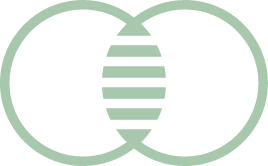
When I worked at Time Inc., I remember a writer asked me, are you a reader or do you just put the copy down without reading it? Well, I am a reader, because you don’t design in a vacuum. Design and copy need to work together, like a couple in a marriage. It’s teamwork all the way. That’s why I make sure I work with a direct response copywriter I am in sync with. Sometimes the writer comes up with the concept, and sometimes I start the ball rolling by giving the writer a rough copy and design idea of how something could work. A compelling headline will draw in the reader, the copy can engage, but in many cases the piece comes fully alive only with the right design.
My creative process? I work with the writer to comfortably move readers along, help them get the message, and finally take action. I ask myself: How should the content be organized in the space we have, for easy readability? How can I visually make it flow? Will there be room for some easy-on-the-eye white space, or should I ask the writer to cut? Are benefits clearly defined? What graphics will make key selling points pop? Figuring out the answers to all of these questions, and more, means a higher chance for better response … and that’s what I aim for, every time.
4. How can the marketer personalize the campaign? Or target the “me” in specific segments?
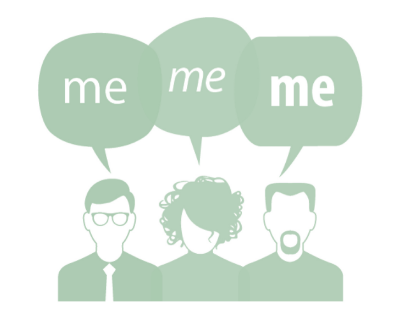
Years ago personalization basically meant you could inject the prospect’s name in a number of places in the creative, in order to “personally” connect with the customer. It worked.
But now – with marketing personalization – you can go many steps further. You can use data to come up with product messages that reflect the specific interests of an individual prospect or group. You can design your campaign around your customers’ personal needs. That’s powerful stuff!
The secret to its power is obvious: Personalization draws people into the piece, because they think, “This is prepared just for me!”
Here are some examples of marketing personalization in action:
- In landing pages. A Facebook ad was strategically placed to attract people to attend a new theater. The landing page will then be created to speak directly to them, showing images of shows they may very well be interested in.
- In brochure design. I created a brochure for a company marketing their product to colleges. The brochure was designed so that each college could customize it, by using their own school colors and logo. See below. Would a generic brochure have worked as well? Don’t think so.



- In postcards and other printed media. Personalizing images are doable, too. Take this Fresh Direct postcard that was directed to me. I have a sneaky suspicion the image was personalized – because the photo shows many items I have previously purchased from them!
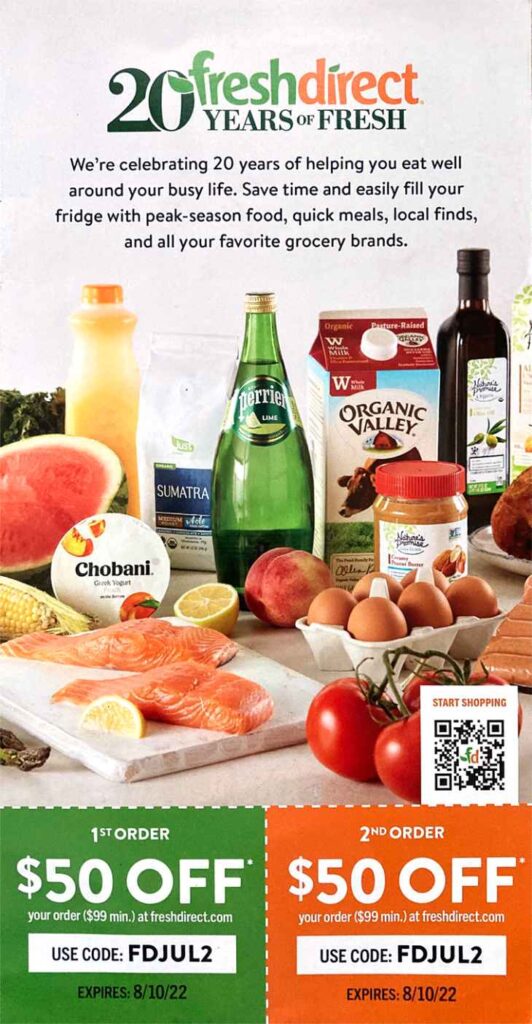
5. How can I make the CTA a clear call to action?
Direct response design is good for business because it incorporates a strong sense of urgency – and knowing where to place the right design elements can make all the difference in driving prospects to action. Here’s what I do:
List ways to respond.

Make the money-back guarantee look official.

Strategically place deadlines and make them stand out so prospects know they need to hurry.
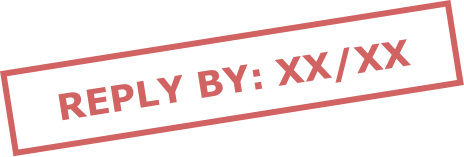
Highlight Incentives (like a free gift).
I tend to box them off, so they look like tiny ads.

Other considerations:
For Print:
I give the response card the respect it deserves by making it clear and easy to fill out. White space, a strong color, and arrows are three of my favorite tools for this vital component.
For Digital:
Especially for acquisition and leads, I keep the form short. Long forms will suppress response. And I make buttons look like buttons — because that’s where the action is!
Most important: I don’t distract attention from the CTA by “busying up” the space. I make it simple for the customer to decide to place an order now. Want other ideas for design elements that work? Read my blog post “My Top 10 Design Elements to Lift Response.”
6. What's the Offer?
Everything we’ve mentioned so far is very important. But a direct response creative is nothing without the offer. That’s because the offer is “The Great Motivator.” It’s the special deal you’re offering the customer if they respond quickly.
EXAMPLES OF OFFERS




Final Word and Thought.
Testing. Even if you have a design that is working, the question is, can it be better? Can you get more leads, retain or upsell more customers? That’s why you need to test. I’ve seen just changing a button on a website from black to green increase response. It’s important to try new offers, new images, new formats, new headlines, and more.
What’s another reason for testing? No one knows exactly what will work with your target audience straight out of the box. I know what worked for other organizations, and I start with that information. But will it work for your business or nonprofit? That’s why you need to evaluate, adjust, and retest periodically. Only that way will you know what really works for you.
Now that you know the why and how of direct response design, let it work for you. When you’re ready to test, a direct response designer is your best option. Here’s to getting serious about acquiring more customers, generating more leads, or retaining (and increasing) your customer file!
